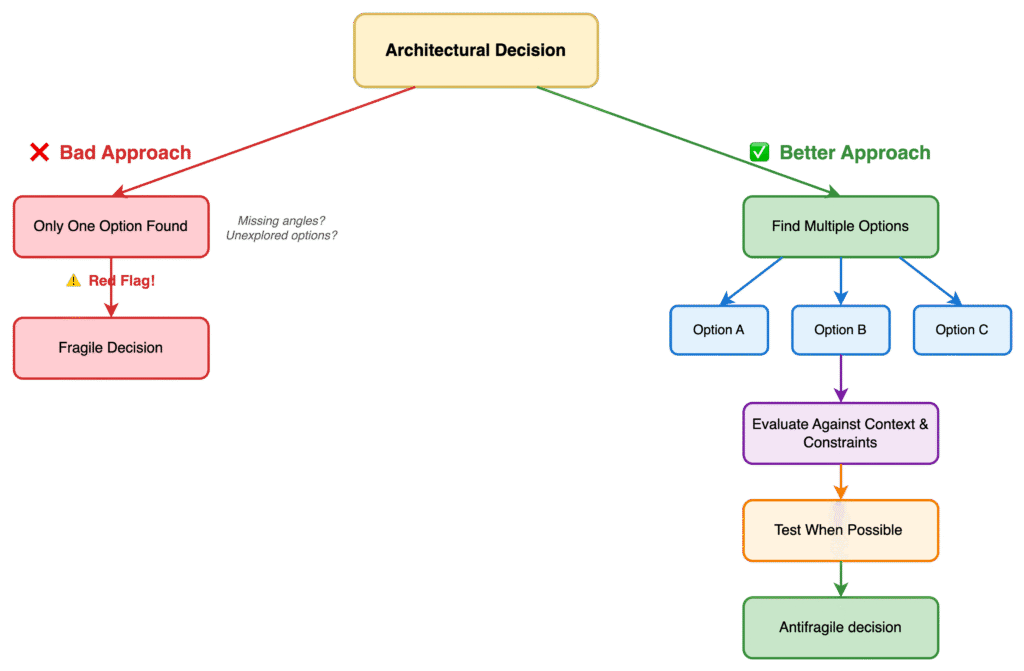Architecture Decisions: Why One Option is No Option
When architects face a technical decision, they often rush to find “the solution.” But here’s the uncomfortable truth: if you only have one option, something is fundamentally wrong with your decision-making process.
The One Option Trap
Having a single option when making architectural decisions is a red flag. It suggests you’re missing critical angles or haven’t explored the problem space thoroughly enough. Real architectural challenges rarely have only one viable solution. When you find yourself with just one path forward, step back and ask yourself what you might be overlooking.
The Fragility of Single-Option Decisions
Decisions based on a single option are inherently fragile. They lack the validation that comes from comparison and evaluation. Without alternatives, you cannot assess whether your chosen approach is truly the best fit for your situation. You’re making a decision in isolation, which increases the risk of missing better solutions.
Finding Hidden Alternatives
If you’re struggling to identify multiple options, the problem isn’t that alternatives don’t exist—it’s that you haven’t found them yet. Other options are out there, waiting to be discovered. Here are ways to uncover them:
Talk to other architects, engineers, and business stakeholders. Fresh perspectives often reveal solutions you hadn’t considered. Different experiences and backgrounds bring different approaches to the same problem.
Challenge your assumptions about the problem itself. Sometimes, the best alternative comes from reframing the challenge entirely. What if the problem you’re solving isn’t the real problem?
Look at how similar challenges have been solved in different domains or industries. Cross-pollination of ideas often leads to innovative solutions.
Making the Choice
Once you have your options—ideally three or more—the real work begins. Evaluate each alternative against your specific constraints, requirements, and context to determine the best fit. Consider factors like complexity, maintainability, performance, cost, and team capabilities.
The goal isn’t to find the perfect solution. It’s to find the best solution for your specific situation at this point. This contextual decision-making is what separates experienced architects from those who simply apply patterns they’ve seen before.
The Power of Testable Decisions
When possible, give yourself the option to test your architectural decisions. If you can validate your choice through small experiments or proofs of concept, you reduce the risk of major mistakes. This is especially valuable when the cost of error is low.
Testing allows you to learn and iterate. If your chosen option doesn’t work as expected, you can pivot to one of your alternatives with confidence, knowing you’ve validated your decision-making process.
The Bottom Line
Remember: if you only have one option, you don’t really have a choice. Without choice, you cannot make the best decision for your unique context and constraints. Take the time to find your alternatives. Your future self will thank you.
If you can test your choice before making your final decision, that’s an even greater advantage. Testing transforms good decision-making into great decision-making.


